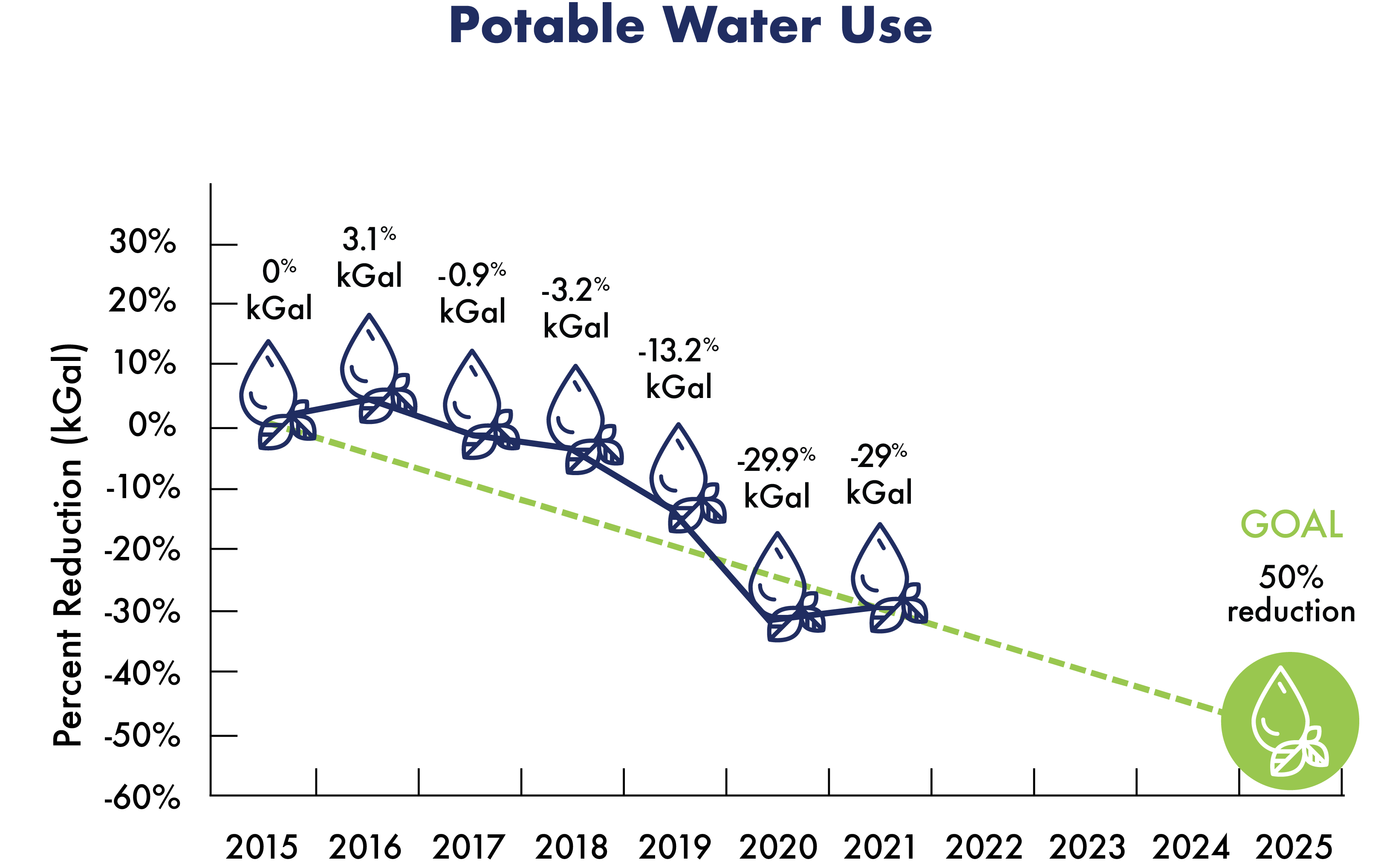By 2030, the United Nations projects that global water demand will exceed supply by 40 percent. Emory has established strong leadership in water conservation among the higher education community. Going forward, efforts to use water more consciously will require commitment from students, faculty, staff, patients, visitors and others – and that commitment will not only make a difference locally but will also have ripple effects far beyond and for years to come.
So Far
- The WaterHub at Emory is the first water reclamation facility of its kind in the U.S. and, by recycling sewage to usable water for heating and cooling campus buildings, reduces Emory’s water footprint by over 40%.
- The newly opened Emory University Hospital Tower is the first LEED certified hospital building at Emory. It is designed to use 30% less water than a typical hospital through water-saving fixtures, and will recover approximately 2.5 million gallons of water annually through condensate recovery.
- A closed-loop laser system helps the Math and Science Center save 2.8 million gallons of water per year.
- Emory University and Emory Healthcare are a part of the Atlanta Better Buildings Challenge, with goals to reduce energy and water consumption 20% by 2020. Emory buildings have been recognized as Top Performers for the greatest energy and water reduction among participants in the Challenge.
 Click image for a larger view
Click image for a larger view
Today
40%
of Emory's total water use is reclaimed by the WaterHub at Emory
425
million+ gallons of water have been recycled by the Emory WaterHub since it opened in April 2015.
75%
of cooling tower make-up water in 2020 was reclaimed, instead of using potable water
- Emory’s Energy and Utilities department publishes an annual report with detailed water conservation impacts.
- Emory uses underground monitoring (UgMO) to monitor soil moisture and determine how much irrigation is needed to maintain a healthy landscape. In addition, Emory uses underground cisterns to capture rainwater.
Tomorrow
We have ambitious goals to use water resources even more efficiently in the coming years. By 2025:
- All of the water for heating, cooling, toilet-flushing and other non-potable needs across all Emory facilities will be supplied by rainwater and grey water as opposed to treated drinking water.
- Emory will use half the water that it did in 2015.
